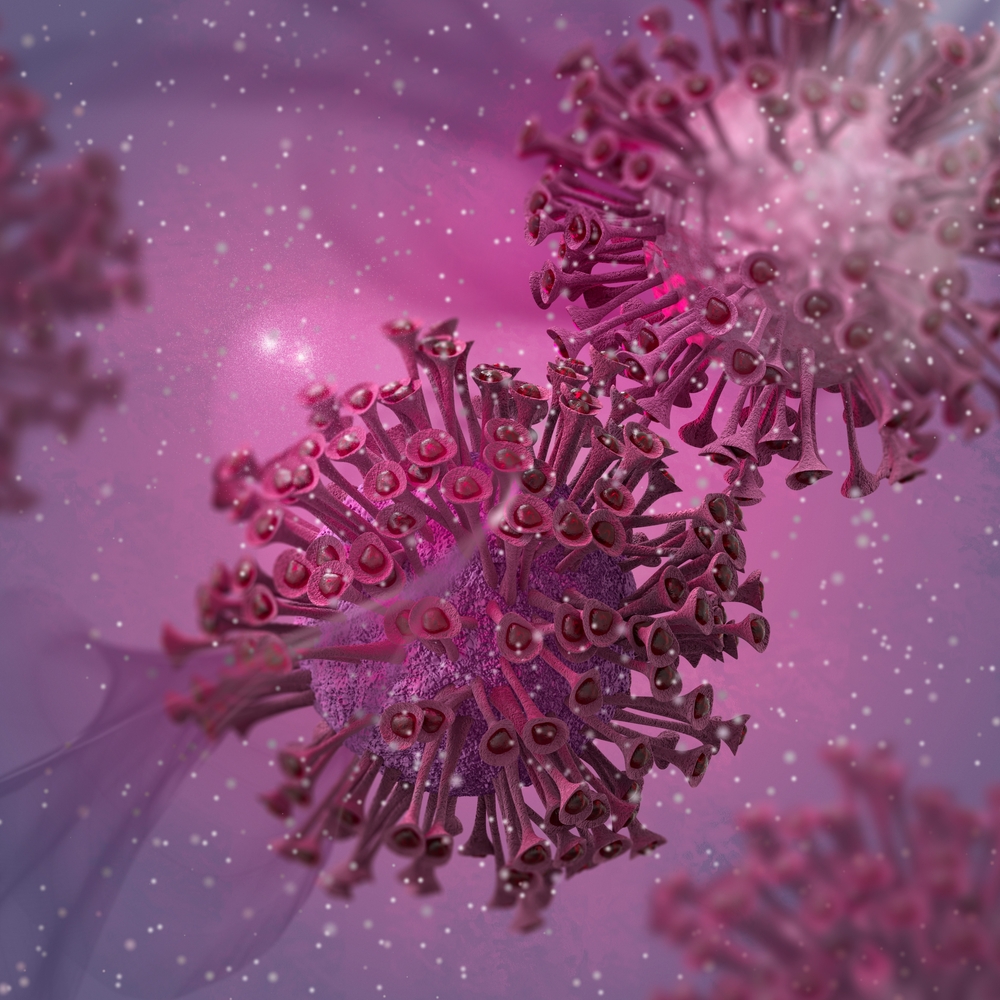
What is the Roseolovirus?
Roseolovirus is the synonym for human herpesvirus 6, which is also called HHV-6 for short. This is a double-stranded DNA virus with a length of approx. 170 kbp. The virus can be grown in lymphocytes after transmission and stimulation. The capsid of the virus is formed in the nucleus after infection, and development into the mature virus then occurs in the membrane systems of the host cell. HHV-6 is the causative agent of the well-known three-day fever in children.
How common is the roseolovirus?
The Roseolovirus has a very high rate of infection. Around the 6th month of life, the maternal antibodies disappear and the infection of infants begins. About half of all children are contaminated by the second year of life, by the age of five it is 80% and by adulthood it is over 90%. The human herpes viruses occur worldwide. Only humans are considered to be the reservoir of the pathogen. The incubation period is about 5-15 days.
How is the roseolovirus transmitted?
The HHV-6, as the Roseolovirus is also clinically called, is transmitted from person to person through saliva, aerosols and close body contact. . When first infected, the pathogen, or more precisely its DNA, can be detected in saliva, stool and monocytes.
What disease is caused by the roseolovirus?
The roseolovirus is responsible for three-day fever, which mainly affects infants and young children. This is a mostly harmless infection with the human herpes virus 6 (HHV-6). In babies and toddlers, it most often occurs between the sixth and the 24th month. By the third year of life, almost all children have already come into contact with the virus at least once. The virus does not have a seasonal peak, but occurs throughout the year .
How does the roseolovirus manifest itself?
The characteristic signs of illness in three-day fever are the sudden sharp rise in temperature from 39 to 41 degrees. At the same time, no cause can be identified. As the name suggests, this fever lasts for about three days. In some children, the fever can also last five days, after which the temperature drops back to normal just as quickly as it rose.
After the fever has dropped, about a quarter of the patients develop a finely blotchy, bright red rash that covers the whole body. The trunk and neck are particularly affected. In some cases, the spots unite and become larger and larger. As the disease progresses, the rash may also spread to the legs and arms. Furthermore, it often spreads to the mucous membranes, with the palate being particularly affected . In most cases, this rash disappears as suddenly as it came, i.e. in a few hours to two days at most.
Roseolovirus can also cause the following accompanying symptoms:
- Swelling of the eyelids,
- Redness of the eardrums,
- Inflammation of the intestines,
- Cough,
- Swelling of the cervical lymph nodes,
- In infants, a bulging fontanel.
What complications can be caused by the roseolovirus?
In about one third of those affected, the three-day fever causes a febrile convulsion. The child loses consciousness and twitches uncontrollably with its arms and legs. At first, this looks worrying. However, this convulsion usually stops after only a few minutes and usually has no consequences. Nevertheless, a paediatrician should always be consulted after such a febrile seizure.
Only in exceptional cases does the roseolovirus lead to complications such as pneumonia, meningitis, liver inflammation or retinitis.
How is the roseolovirus diagnosed?
If it is a characteristic course of three-day fever, a doctor can make the diagnosis quite clearly and quickly on the basis of the symptoms. But in some cases, the doctor will order a blood test to make a better diagnosis. This is mainly the case if the course of is atypical. Increased leukocytes, i.e. white blood cells , can be found in the blood count during the fever phase. When the fever subsides, the leukocytes are immediately reduced .
Three-day fever can be diagnosed even more accurately with the help of an IgM antibody test or an HHV IgG antibody test . HHV-6 can be detected in blood, saliva, urine and cerebrospinal fluid using a PCR test.
How is the roseolovirus treated?
At of an infection with the roseolovirus, only the symptoms are treated. If the three-day fever results in body temperatures above 38.5 degrees, it can help if the child is given calf compresses or also stomach compresses . After consultation with the paediatrician in charge, medicines such as paracetamol can also be given to reduce the fever. Most children then feel better.
To reduce the fever, it can also help if the child wears very little clothing, for example, just a nappy and bodysuit. This helps to regulate the body temperature. It is essential that the child drinks a lot, because babies and toddlers in particular lose a lot of fluids due to the high fever.
If a febrile seizure occurs, it is advisable to lay the child on the floor so that it can breathe freely and cannot injure itself so easily. You should always inform the paediatrician and report the incident in detail, even if the child has recovered quickly. In many cases, it is recommended that the child be observed in hospital and treated if necessary.
How can the roseolovirus be prevented?
Since the virus is transmitted via droplet infection, it is hardly possible to protect oneself from the roseolovirus. Contact with known people who have the disease should therefore be avoided. There is no protective vaccination against the roseolovirus.
